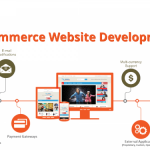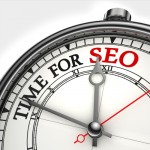Digital marketing has totally revolutionized the way the customer interacts with a product. So far various institutions depended on the traditional ways to develop a personal relationship with the customer. But the scenario is changing fast, age-old channels are becoming obsolete and modern techniques are taking their place. Meetings and conversations are conducted in a different way and if companies do not adopt these practices, it will be very hard for them to stay in the game.
Understanding Product Life Cycle
A product goes through many stages, right from the moment it is launched till it is discontinued. The various stages are described by Product Life Cycle. This strategy tool helps the companies in developing new products and refining the existing ones. Introduction, growth, maturity and decline are the four main stages of this cycle, but the last part can be averted by revamping certain product elements. Different products go through the cycle in different ways, some move extremely fast while others perish soon after introduction.
So let’s have a look at the various stages of PLC.
Introduction: This is the first level and consequently the characteristics of the new product are unknown. The promotion is very personalized, the cost is usually high and limited distribution takes place.
Growth:Â Â The item is consumed in large volumes and it results in a price drop. The promotional strategy is mainly focused on the benefits of the products and the distribution escalates.
Maturity: This is a competitive stage as the product faces a tough challenge from the alternatives in the market. Distribution is intense and the availability of the product increases significantly. The price is also reduced and the promotion happens in a different way. The customers are shown why the particular commodity is different from its competitors.
Decline: This is the last stage of the product and the competition is also significantly low. This stage shows selective distribution and price rise. The customers are reminded of the product’s existence by the promotion.
Analyzing the Customer
It is impossible to know the psychology and behavioral patterns of the customers, without establishing a proper relationship with them. The company should analyze digital footprints and learn about the customer’s behavior. The right metrics and advanced analytics can make digital communication very simplified and the customer will receive most of the marketing message. Perhaps, the most important thing is the customer service, it is applicable for both online and offline customers. If the quality of customer service increases the revenue will also increase with it.
The difference between big data and small data
The available data should be utilized efficiently and personalized offers are created by making use of relevant data. Customer analytics is often mixed with the term “big data’’, however small data also plays a vital role in determining the success. There is a slight difference between the two as the analytics is used in a different way. Small data deals with specific information about the customer whereas big data is used for comparing important customer related information across different segments. Specific customers can be segmented and they are served with personalized marketing offers.
Better Customer Experience – How it is developed?
As every customer is unique, the data is unique too. Digital marketing helps is segmenting customers and this is crucial starting point. The analysis should take into account the data relating to customer behavior and this will help in fixing future strategies. The segments constantly change as new data is added and big companies are smart enough to review the segments and update them, so that their analysis is relevant. Customers respond to offers in a particular way and these response rates are a part of their online behavior. Companies develop better landing pages, appealing offers as they have ample knowledge about the customer and as a whole the customers feel a different kind of experience.
Fixing the Strategies
The different social channels can help in acquiring the customers but expanding the reach is not the only thing, optimization is vital. The optimization should occur before a session expires. Text messages and emails are often send to customers while they are in-session and if a positive feedback is received; the approach is used for other customers as well. The company should gain the trust of the customers and this is why relevant results are so popular. Despite the privacy concerns, results which are based on previous search patterns get the most number of clicks.
Conclusion
Online retailers have successfully used personalized offers to boost their business and they have gone way ahead of the companies which don’t use these analytics. From pop-up ads to website tags, every digital footstep is measured and a highly powerful strategy is developed. As the product passes through different stages in its life-cycle, the digital marketing tools enhance the customer experience after crossing the technological hurdles. For more info visit our blog.













Leave a Reply